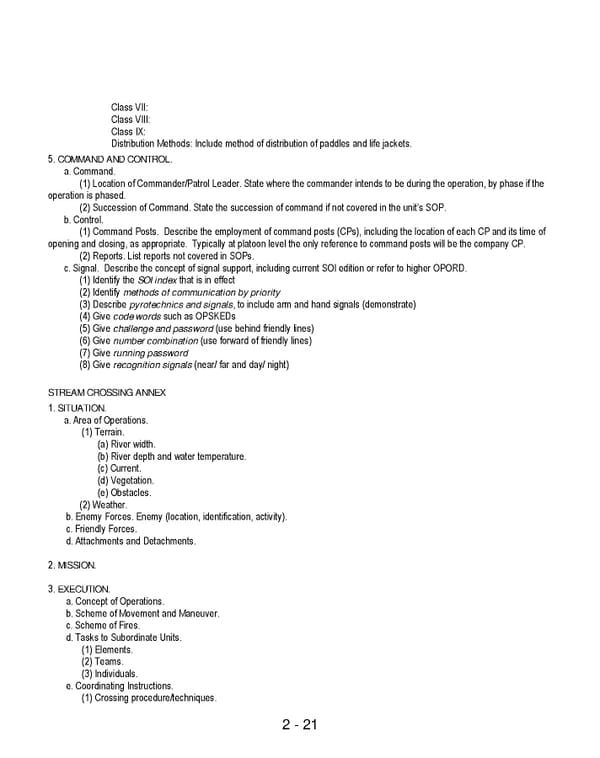2 - 21 Class VII: Class VIII: Class IX: Distribution Methods: Include method of distribution of paddles and life jackets. 5. COMMAND AND CONTROL. a. Command. (1) Location of Commander/Patrol Leader. State where the commander intends to be during the operation, by phase if the operation is phased. (2) Succession of Command. State the succession of command if not covered in the unit’s SOP. b. Control. (1) Command Posts. Describe the employment of command posts (CPs), including the location of each CP and its time of opening and closing, as appropriate. Typically at platoon level the only reference to command posts will be the company CP. (2) Reports. List reports not covered in SOPs. c. Signal. Describe the concept of signal support, including current SOI edition or refer to higher OPORD. (1) Identify the SOI index that is in effect (2) Identify methods of communication by priority (3) Describe pyrotechnics and signals, to include arm and hand signals (demonstrate) (4) Give code words such as OPSKEDs (5) Give challenge and password (use behind friendly lines) (6) Give number combination (use forward of friendly lines) (7) Give running password (8) Give recognition signals (near/ far and day/ night) STREAM CROSSING ANNEX 1. SITUATION. a. Area of Operations. (1) Terrain. (a) River width. (b) River depth and water temperature. (c) Current. (d) Vegetation. (e) Obstacles. (2) Weather. b. Enemy Forces. Enemy (location, identification, activity). c. Friendly Forces. d. Attachments and Detachments. 2. MISSION. 3. EXECUTION. a. Concept of Operations. b. Scheme of Movement and Maneuver. c. Scheme of Fires. d. Tasks to Subordinate Units. (1) Elements. (2) Teams. (3) Individuals. e. Coordinating Instructions. (1) Crossing procedure/techniques.
 Ranger Handbook Page 42 Page 44
Ranger Handbook Page 42 Page 44